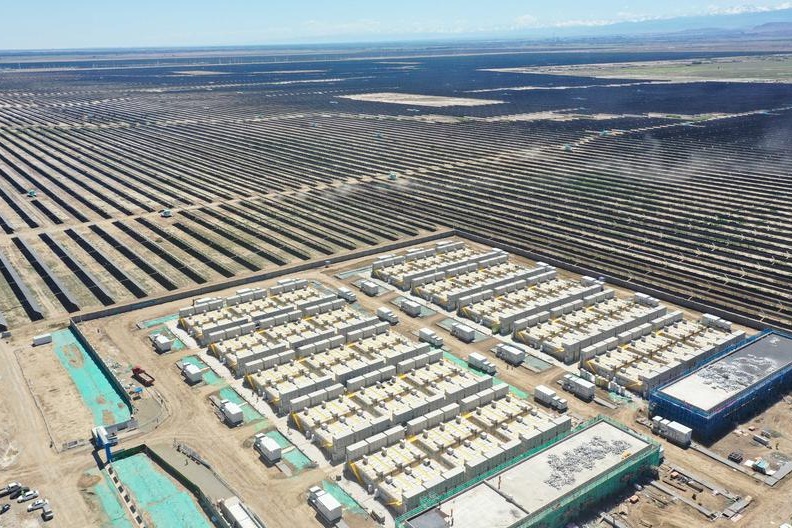It all depends on how you measure it

Talk of China overtaking the US as an economic power is overbaked
As many countries and regions, including the United States and Europe, grappled with economic problems over the past five years, the Chinese economy has steamed ahead, albeit at a reduced pace, fueling predictions that some time soon it will surpass the US as the world's largest economy.
But such predictions are overstated because they take into account just one measure, GDP.
The US has indeed had much lower growth over the past five years, but it has a large economic base, too. One percentage point rise of US GDP is equivalent to 2.5 to 3 percentage points of growth in China. Coupled with the fact that the US grows mainly from technological innovation rather than investment expansion, its sustainability is much higher.
So talk of China "overtaking" the US, based on GDP, overlooks the matter of overall strength.
Such strength includes not only economic resources but also population, military, diplomatic and cultural influence. Even at a mere economic level, in addition to total economic volume, there are indicators including structure, efficiency and sustainability of the distribution of income, the level of per capita income, and soft powers such as education, health, quality of life, competitiveness and brand image.
So a one-sided emphasis on GDP overshadows the critical matter of citizens' wellbeing. The fundamental goal of increasing GDP is to make the pie big enough for every member of society to have a bigger share. If the level of well being as a whole does not keep pace with GDP, China will be caught in the middle-income trap, which will eventually offset its advantages with regard to GDP.
Some Latin American countries have been stuck in the middle-income quagmire for decades, and China needs to learn from that. If China does happen to be on top of the GDP chart one day but has sub-par income, any claim to have surpassed the US and Europe will be hollow indeed.
In the meantime, there is at least one thing the Chinese government ought to be keeping its eye on: internationalization of the yuan. It should accelerate the pace in that direction, unshackling itself from the US dollar as the currency of global monetary settlement.
The next 10 to 15 years will be critical. Yuan internationalization will be driven by the sustained and rapid growth of the Chinese economy and foreign trade, especially with the BRICS, African and South American countries.
Yuan internationalization could also spur China's interest rate and exchange rate reform, capital market expansion, and policies on monetary regulation.
The China Chamber of International Commerce forecasts that from 2020 to 2025 the yuan will account for more than 10 percent of international trade settlements and as much as 15 percent of international reserves and foreign exchange transactions.
By 2025 the exchange rate of the yuan against the US dollar will be about 4.2 to 1. When you consider the sheer size of the Chinese economy and the volume of foreign trade, the yuan lacks the status it ought to have in the world, and internationalization has been held back by China's economic growth and levels of financial supervision.
The financial crisis has had a great impact on the global economy and the existing major international currencies, particularly the US dollar, and has provided a rare opportunity to speed up internationalization of the yuan.
In 2030, if the yuan is used in international trade settlement broadly in line with China's share of global trade, and if a great proportion of foreign reserve assets is in yuan, that will help prevent the US from once again absorbing global wealth by issuing bonds, currency, and through depreciation of the dollar.
Under China's 12th Five-Year Plan (2011-15) and long-term economic development, the government will also come up with programs that consider economic changes.
International investment and trade will change widely and profoundly. Post-financial crisis era strategic adjustment and transformation are all the more urgent, especially as China's labor costs rise, the demographic dividend disappears, and in the face of uneven economic development. Environmental pollution and aging are also serious challenges that the Chinese government needs to deal with.
In the short term, while China's monetary policy is steady, loans and direct financing are increasing dramatically.
Even though the US launched a policy of quantitative easing after the financial crisis broke out, the total loans in the banking system has hardly increased. That means stagflation or even a hard landing in China is most unlikely.
On the other hand, China has its own set of policies to ensure economic growth, which means it has the wherewithal to compete with the US economically. But talk of the two going head to head is premature.
The author is a post-doctoral fellow at the School of Economics, Renmin University of China.
(China Daily 05/03/2013 page7)
Today's Top News
- WIPO: China retains its position as the global leader with 1.8 million patent applications
- Xi sends congratulations to 20th theory seminar between CPC, CPV
- China, Spain to build more strategically resilient, dynamic, internationally influential bilateral ties: Xi
- Xi holds welcome ceremony for Spanish king
- Astronauts' return mission proceeds smoothly
- Vocational education helps youth break the cycle of poverty






























